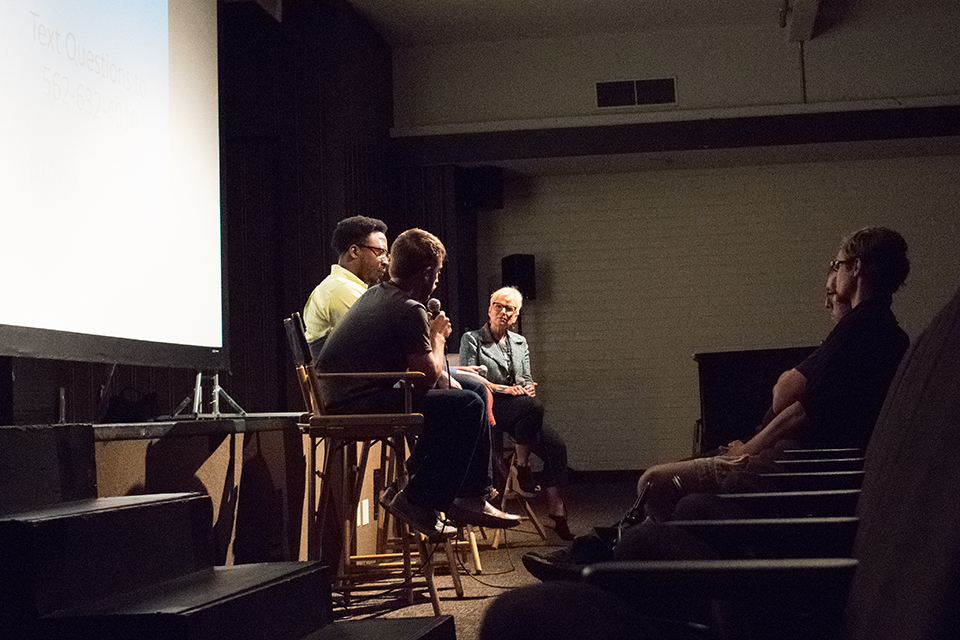The auditorium buzzed in a frenzy of laughs and glances as everybody anxiously awaited a documentary which might make them squirm a little bit. The first showing to the Biola community of “Show Me Democracy” had finally arrived. Although people awaited with a bit of uncertainty, the auditorium was packed — people wanted to be there, people wanted to be a part of this conversation. A conversation about a terrible story, the Ferguson shooting of Michael Brown. People had now reached a point where they wanted to understand and listen, their faces showed it all, which is exactly what alumnus and director Dan Parris really wanted.
Ferguson Riots
Parris graduated from Biola in 2008 with a degree in cinema and media arts. Since then, he has focused on creating documentaries that bring awareness to controversial social topics. His latest project, “Show Me Democracy,” showed in Mayer’s auditorium on Sept. 14. “Show Me Democracy” deals with the riots in Ferguson as it follows seven college students turned activists who use protests as way to achieve change. Parris relays his primary motivation for bringing this subject matter to light.
“Well, you know, I live in St. Louis so this story kinda came right to my front yard. Michael Brown’s shooting happened in my city. Protesters were outside my door saying, ‘Out of your houses, into the streets,’” Parris said.
He went on to explain that because of things like this happening in such proximity to his day-to-day life, he could not just ignore it. He had to tap into that possible discomfort, he had to engage with it, not ignore it, and let his voice be heard.
Times are changing and so are the people in these times. Some continue to get louder about what they believe, but some getting shyer and more full of fear: of ignorance, of being wrong, of putting themselves in other people’s shoes. Parris also shared about these fears for himself.
A reality that simply screams desperation
“It became a personal journey, being a white male, there was a lot to learn and it’s really hard to take yourself out of your own experiences and put yourself in someone else’s experience,” Parris said.
As the scenes filled with raw emotion and unbelievable dialogue began to play out before the audience, feelings of enthrallment and sadness began to settle. Deep sadness and empathy was scattered on everyone’s faces. Some lined with shame, some lined with sympathy, some lined with frowned worry. All for students and families who remain very similar to us. The fact that people’s faces and body language depicted all those sorts of things meant they were truly feeling something, and that seems like an intrinsic change.
Parris found it extremely vital for a contemporary narrative to delve into the realistic feelings that a white male might be dealing with: confusion, wanting to know more, and understanding the multiple sides of every story. As humans we need to be humble enough to listen and view those stories through as many different perspectives as possible.
“Love people like their pain is your pain,” Parris said.
In a few perfect little words, a magnanimous concept is depicted. This powerful documentary does a wonderful job of showing viewers a reality that simply screams desperation. Parris’ storytelling seeps through the pores of humanity and creates empathy for those whose lives changed drastically. By the boundless applause at the end, it was clear this audience was thankful for the exposure to so much information and explanation. The audience in that auditorium was no longer ignorant or confused, there was now knowledge, and there remains much to be done with it.







